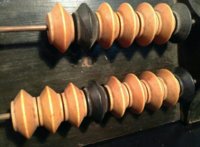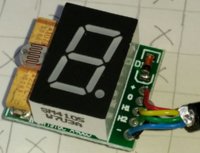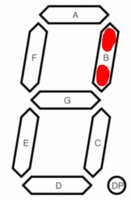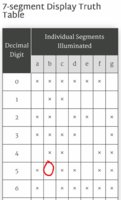Lemme know if you work it out Paul - that really could be useful!
Certainly, the "headlight blown" indicator is not....
Pete
Certainly, the "headlight blown" indicator is not....
Pete
Are people offering you discount tickets to "Stupid Island"?
Paging Rube, Rube Goldburg..... Your simplicator is ready for pick up at the service counter...
...In the dream world I would put a pressure sensor on top of the gear lever and another on the bottom so I could count up and down. The reality may be a little mechanical counter taped to the handlebar that I press each time I change gears then mentally divide by some factor...... I got the answer, an Abicus with five green beads!

OK - looks good but wouldn't something like a Hall effect non-contact sensor be more robust in a wet/dirty environment than a little mechanical micro-switch (I don't know for sure - I'm not an electrical guy).
Those are the sort of sensors used on cruise controls - just a little magnet glued onto the drive shaft.
First, I'd like to apologize for the crude graphics, this was done with the Windows Paint program ( I couldn't find my crayons....).
Here's my suggestion on the shift indicator implementation. NOTE: This would only work if there is at least a 1/4'' space between the left engine case and the shift shaft sprocket/chain guard. Not sure if that space exists.
This "design" would house the sensors inside the cover, giving some weather protection and hiding the whole thing from view. Would probably need some sort of protection from the oil being slung of the chain though. It would consist of a slotted sensor mounting plate with a hole in it that is slightly larger that the shifter boss inside the cover, and a cinch bolt to hold it in alignment. The sensors would mount to this at the correct working angles. Almost touching it would be the (also aluminum?) magnet holder that mounts directly on the shifter shaft. Alignment could done by using one of the case mounting holes as a reference.
I've never used one, but it looks like the gear indicator kits on eBay would be really hard to beat, dollar for dollar. You get the indicator, logic, wiring, and sensors for a song.
...Making it look good is another question entirely though.



